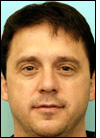Feb 20, 2013Factory automation equipment company Turck USA, a division of German firm Turck, reports that some of its customers have begun using its passive ultrahigh-frequency (UHF) tags and transceivers (readers) to collect data regarding the movements of tagged assets and products within their facilities. The UHF RFID technology provides a longer range than the Turck high-frequency (HF) systems those companies had previously employed, and thus enable the reading of tags from fixed transceivers at such locations as dock doors.
Turck USA has provided its BL ident RFID technology to original equipment manufacturers (OEMs), as well as automotive and pharmaceutical companies and other end users, since 2007. The firm manufactures products designed for industrial automation, including HF 13.56 MHz tags and transceivers complying with the ISO 15693 standard (see Turck Introduces Modular RFID System for Controlling Machines). The tags are typically attached to items such as automotive parts, so that they can be tracked while moving through the facility for the purpose of inventory management, as well as for monitoring work in progress as components are assembled.
Until recently, the company provided only HF technology, which it was able to develop and commercialize faster than a UHF solution. Using Turck's 18-millimeter (0.7-inch) barrel-shaped fixed transceiver or a handheld reader, a worker could capture a tag ID and any other data, or write information to that tag at close range. The process improves on the practice of utilizing bar codes to identify parts during manufacturing, the company explains, since RFID tags do not require a clear line of sight with a reader, making it much easier to capture a tag's data than to scan a bar-coded serial number.
However, says Matt Boudjouk, Turck USA's RFID and modular IO (input-output) product manager, UHF technology creates new deployment opportunities. Some RFID installations do not allow for transceivers to be mounted close to a tagged product or part, he says, which makes a fixed HF solution impossible. The company, therefore, has developed passive EPC Gen 2 UHF tags able to sustain the hard knocks related to manufacturing, with housings developed for specific use cases. The tags are also able to operate within automotive paint shops or other environments in which temperatures may reach 300 degrees Celsius (572 degrees Fahrenheit).
Turck USA's customers that are using UHF technology have typically installed the company's transceivers in portals or on ceilings above assembly areas, and attach tags to products via either adhesive backing or bolts. Each tag can contain up to 138 bytes of memory, so users can store a unique identifier and other information, such as a part's number and date of manufacture.
The UHF transceivers, which can both read and write to a tag, come in rectangular versions that can be mounted either on a ceiling, on a wall or onto manufacturing equipment. The transceivers are cabled to an RFID IO module—which, in turn, is networked to a computer or programmable logic controller (PLC) via a gateway module. Up to two transceivers can be cabled to a single RFID IO module, which provides power to the transceivers.
The gateway module is available as either a programmable or nonprogrammable unit, and can manage up to 16 transceivers. The nonprogrammable version simply receives the data read by the transceiver, and pushes that information onto the PLC or computer; the PLC can also trigger write commands to the transceiver. A user can then decide whether to integrate that data with a management system, or simply to store it on a PLC. The programmable version, in contrast, can also be configured to provide a higher level of data to the PLC or computer—based on instructions such as issuing an alert in the event that something is not found at its expected location.
Turck's software enables users to store and interpret the read data, and to trigger events, such as writing to tags (whether UHF or HF). "Whatever network protocol being used," Boudjouk states, "we can provide seamless integration."
Some of Turck USA's customers began piloting the UHF technology as long as a year ago, and a few of those pilots have since transitioned into permanent deployments. To date, Boudjouk reports, most users have been automotive manufacturers, though these companies have asked not to be named in this story. Some of Turck USA's customers currently utilizing its HF solutions in other industries, such as pharmaceuticals, may opt to employ passive UHF tags on some of their assets or products. Because there is still interest in using existing HF technology, he says, Turck is continuing to develop HF solutions, with a focus on increasing the range of HF technology up to 1 meter (3.3 feet). In the case of UHF technology, the company intends to offer tags and transceivers in additional sizes, in order to accommodate the required form factors.


